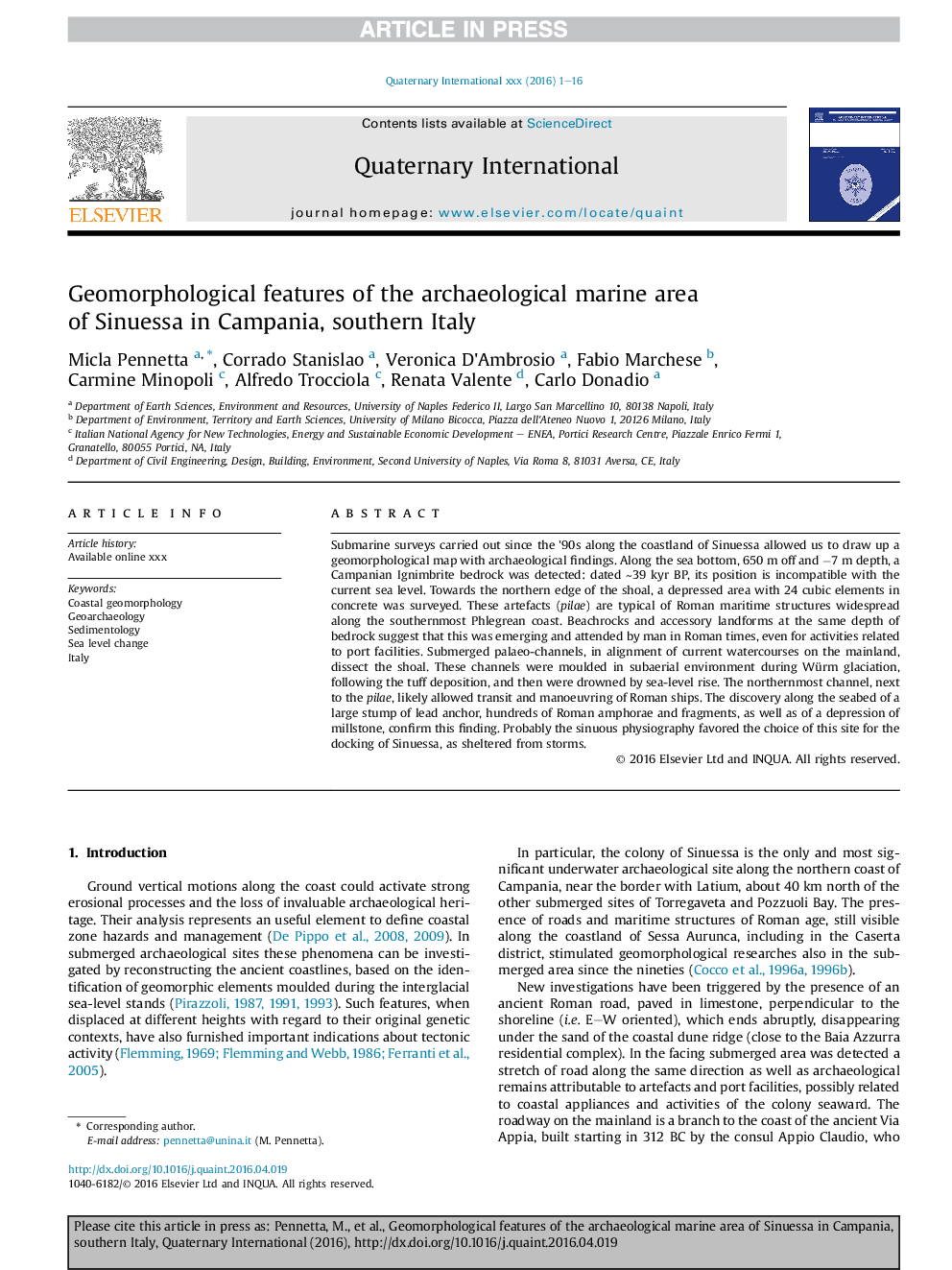| Article ID | Journal | Published Year | Pages | File Type |
|---|---|---|---|---|
| 5114014 | Quaternary International | 2016 | 16 Pages |
Abstract
Submarine surveys carried out since the '90s along the coastland of Sinuessa allowed us to draw up a geomorphological map with archaeological findings. Along the sea bottom, 650 m off and â7 m depth, a Campanian Ignimbrite bedrock was detected: dated â¼39 kyr BP, its position is incompatible with the current sea level. Towards the northern edge of the shoal, a depressed area with 24 cubic elements in concrete was surveyed. These artefacts (pilae) are typical of Roman maritime structures widespread along the southernmost Phlegrean coast. Beachrocks and accessory landforms at the same depth of bedrock suggest that this was emerging and attended by man in Roman times, even for activities related to port facilities. Submerged palaeo-channels, in alignment of current watercourses on the mainland, dissect the shoal. These channels were moulded in subaerial environment during Würm glaciation, following the tuff deposition, and then were drowned by sea-level rise. The northernmost channel, next to the pilae, likely allowed transit and manoeuvring of Roman ships. The discovery along the seabed of a large stump of lead anchor, hundreds of Roman amphorae and fragments, as well as of a depression of millstone, confirm this finding. Probably the sinuous physiography favored the choice of this site for the docking of Sinuessa, as sheltered from storms.
Related Topics
Physical Sciences and Engineering
Earth and Planetary Sciences
Geology
Authors
Micla Pennetta, Corrado Stanislao, Veronica D'Ambrosio, Fabio Marchese, Carmine Minopoli, Alfredo Trocciola, Renata Valente, Carlo Donadio,
